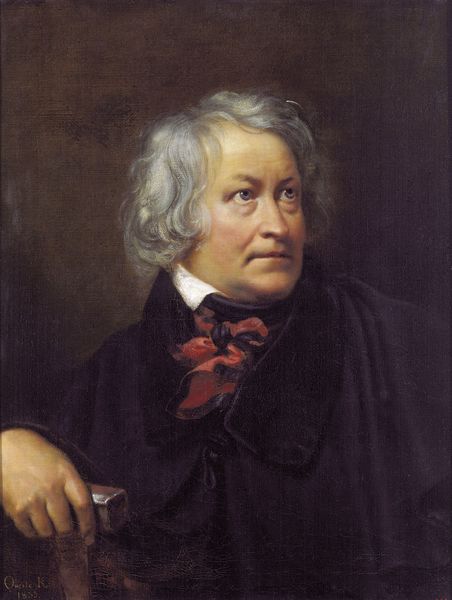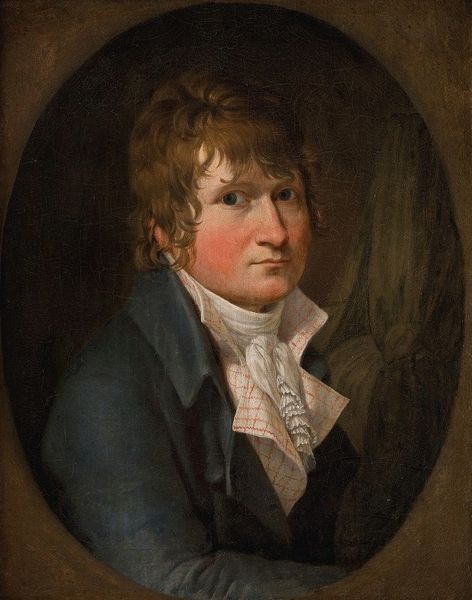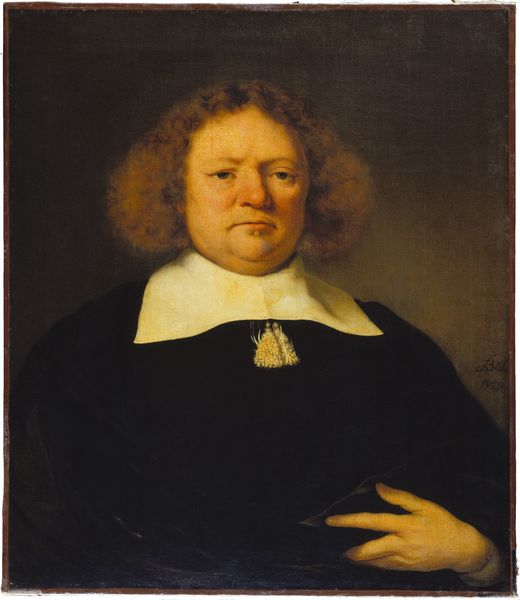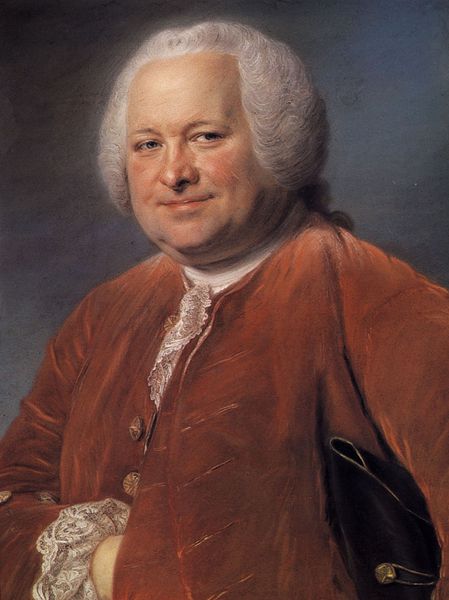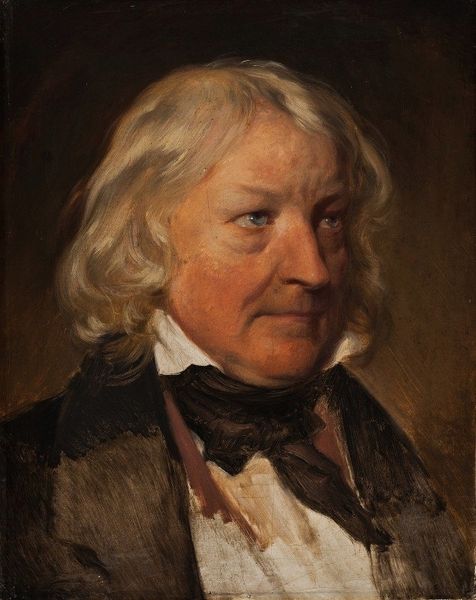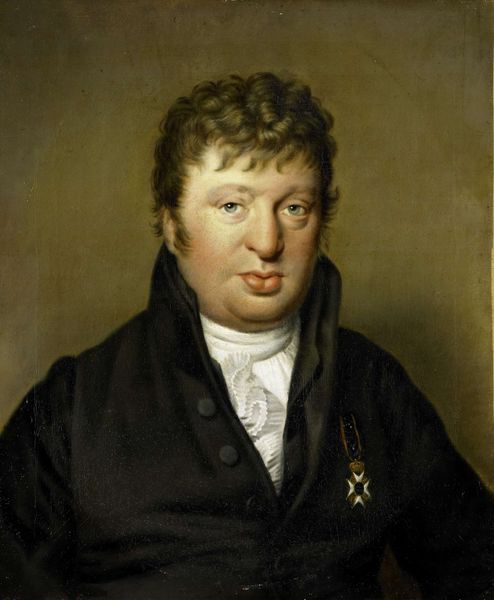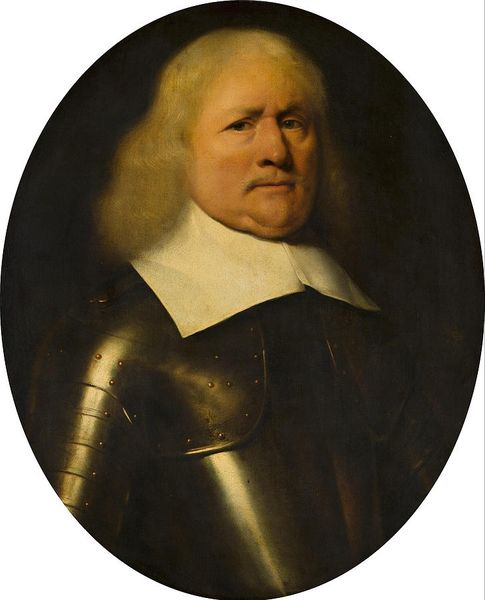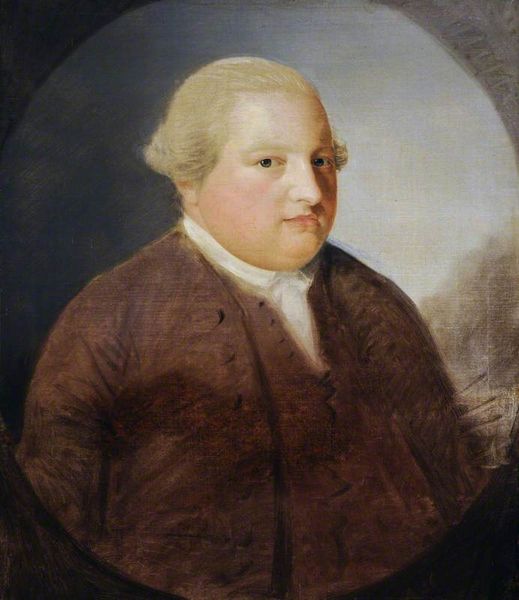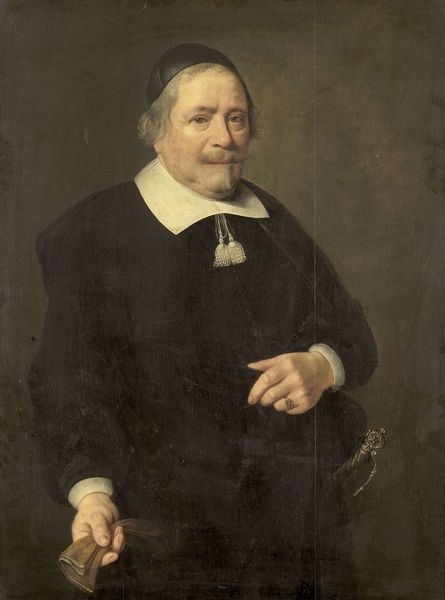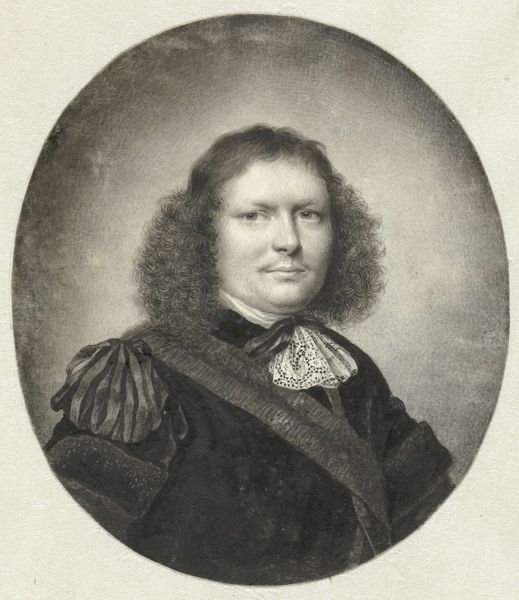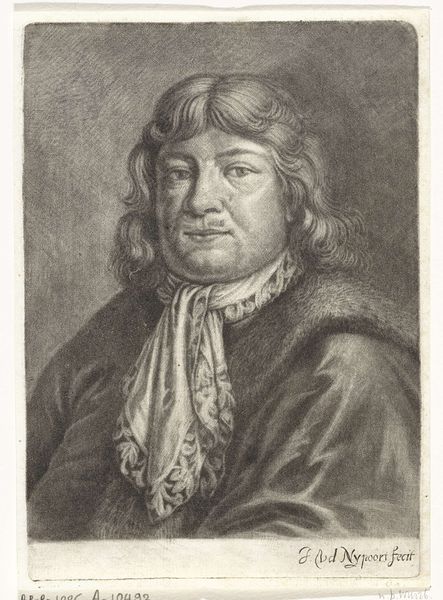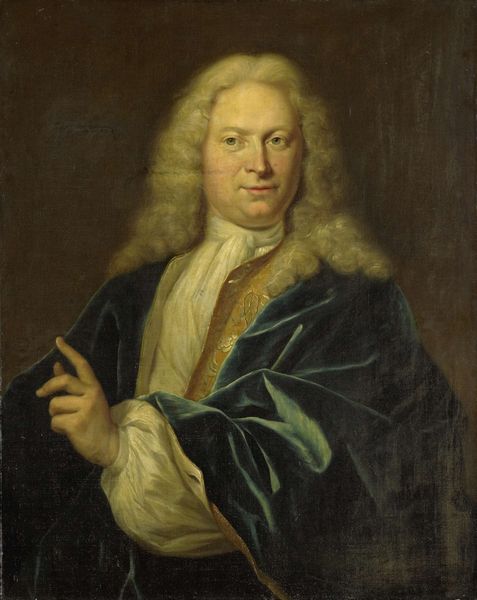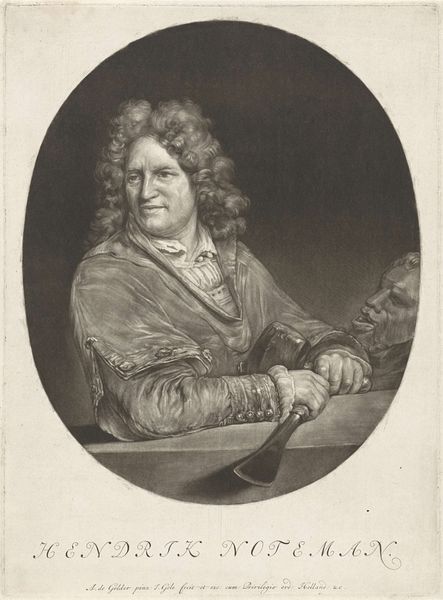
Dimensions: support: 686 x 560 mm frame: 990 x 860 x 91 mm
Copyright: CC-BY-NC-ND 4.0 DEED, Photo: Tate
Curator: This is a portrait of Dr Henry Hepburn, likely completed sometime in the 18th century, attributed to the British School. It's held here at the Tate. Editor: The somber palette gives it a rather austere feel, doesn’t it? It really emphasizes the sitter’s… robust physique and rather stern expression. I wonder about the materials used—the visible texture of the canvas suggests a deliberate roughness. Curator: These portraits served a crucial function. They projected power, status, and belonging. Commissioning this portrait allowed Dr. Hepburn to visibly assert his place within the social fabric. Editor: Absolutely, but I'm drawn to the way the artist handled the paint itself—thick impasto in the face, thin washes in the background. The act of applying the paint, the labor involved, it all speaks to a social transaction. Curator: Indeed. Displaying this artwork in a prominent setting further solidified that social standing. It was a carefully orchestrated performance of self. Editor: The details—the subtle sheen of his coat, the way light catches the folds—hint at a certain level of luxury and refinement, acquired through means we should probably question! Curator: A good point, and that's why examining the historical context is so vital. Editor: It makes you wonder about the cost of such portrayals and the labor that went into their production. Curator: It’s a potent reminder of the social dynamics embedded within artistic creation. Editor: It certainly reveals how art, even portraiture, is as much about production as it is about representation.
